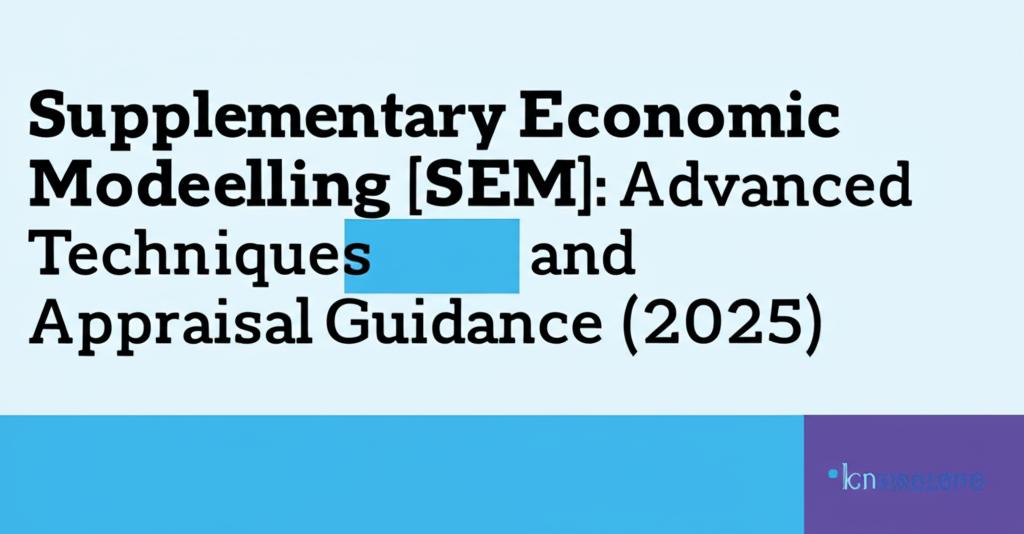Supplementary Economic Modelling (SEM) is undergoing significant revisions to enhance its application in appraisals, particularly for transport schemes. These updates, expected to become definitive guidance in May 2025, focus on improving the clarity, consistency, and currency of the guidance. The revisions incorporate findings from recent research and aim to facilitate better decision-making at various stages of the appraisal process.
A key aspect of the updated guidance is the more detailed and comprehensive descriptions of advanced modelling techniques. These include Land Use-Transport Interaction (LUTI) models, Spatial Computable General Equilibrium (SCGE) models, and Quantitative Spatial Economic (QSE) models. The guidance now makes a distinction between 'basic SEMs' (like additionality and reduced-form models) and these 'advanced SEMs,' which explicitly simulate economic decisions or land-use changes.
The revised opening sections of the guidance will offer clearer explanations of the rationale for using SEMs and their application in appraisal. There will be substantially expanded guidance on selecting appropriate types of SEMs for specific appraisal needs. Furthermore, the update will provide clearer guidance on model specification, validation, and reporting, in line with Transport Analysis Guidance (TAG) requirements. An updated and expanded list of references and relevant literature will also be included.
The structure of the guidance has been revised to be more legible and succinct. The initial sections (1 to 3) provide an introduction and outline the rationale and basic requirements for using SEMs, targeting a broader audience. The more technical sections (4 to 8) delve into detailed information on the most relevant types of SEMs, aimed at modelling practitioners, specialists, and model peer reviewers.
While the results of SEM are primarily included in the indicative Benefit-Cost Ratio (BCR) and thus the impact on overall appraisal outcomes is expected to be limited, these revisions are particularly relevant for appraisals where wider economic impacts (WEIs) are anticipated to significantly affect the Value for Money (VfM) assessment. The main goal is to increase the ease of and confidence in selecting appropriate modelling techniques for estimating WEIs and to support more consistent and robust appraisal practices among scheme promoters, modellers, and other stakeholders.
It's important to note that these forthcoming changes, announced in April 2025, will become definitive alongside other changes announced in November 2024, as part of the TAG orderly release process. To ensure correct and consistent referencing, minor adjustments have also been made to other TAG units (A2.1, A2.3, A2.4) and the VfM framework.
In essence, Structural Equation Modeling (SEM) integrates factor analysis and multiple regression to analyze relationships between measured variables and latent constructs. This is particularly useful in econometrics for understanding complex interactions between economic indicators and theories, allowing for the modelling of unobservable variables like "market sentiment." The updated guidance aims to leverage these capabilities more effectively in project appraisals.
For instance, when considering dependent development, if there's no clear dependency based on unlocking sites or capacity, there previously wasn't a method to value this. For large schemes with widespread, unidentified site impacts, an assessment of induced investment would necessitate supplementary economic modelling. The updated guidance clarifies the definition of dependent development and advises on discussing uncertainty and testing the sensitivity of appraisal outcomes to its delivery.
The global economic outlook for 2025 suggests stabilization but with persistent challenges, including potential impacts from monetary policies, government debt, and price volatility in the energy sector. Technological advancements, particularly in AI and automation, are expected to drive innovation and influence various sectors. These broader economic trends may indirectly influence the context and application of SEM in appraisals.

